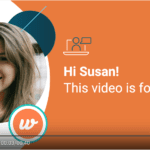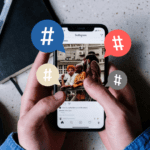In the world of nonprofit work, passion fuels the mission, but strategic fundraising is the engine that drives it forward. Traditional methods like annual galas and direct mail appeals still have their place, but the landscape of giving is evolving. Today’s donors, bombarded with digital noise, crave more than a transactional request; they seek meaningful connection, authentic storytelling, and a clear sense of their personal impact.
To thrive, nonprofits must move beyond basic listicles of fundraising ideas and embrace strategies that build genuine relationships and foster a true community around their cause. This means shifting from simply asking for money to inviting supporters on a journey. It requires a blend of community-driven effort, digital innovation, and, most importantly, a human touch. Let’s explore a few innovative nonprofit fundraising strategies that are less about casting a wide net and more about weaving a strong, interconnected web of support.
1. Turn Supporters into Champions with Peer-to-Peer Ambassador Programs
Peer-to-peer (P2P) fundraising isn’t just about asking people to raise money for you; it’s about empowering your most passionate supporters to become active storytellers and advocates for your mission. By creating a formal “Ambassador Program,” you transform this strategy from a one-off campaign into a sustainable engine for growth.
Why it works: The most powerful endorsement of your work comes not from your organization, but from a trusted friend or family member. An ambassador program harnesses this social proof by giving your key supporters the tools, training, and recognition they need to effectively share your story with their personal networks. This decentralizes your fundraising efforts, extending your reach far beyond your own email list and social media following. It turns a single institutional “ask” into hundreds of personal, heartfelt appeals.
Putting it into practice:
- Recruit strategically: Identify your most engaged supporters, consistent donors, active volunteers, or vocal social media followers, and personally invite them to become ambassadors.
- Equip them for success: Provide a comprehensive digital toolkit with key messages, impact statistics, high-quality images, and customizable social media and email templates. Make it easy for them to share compelling, on-brand content.
- Foster a community: Create an exclusive group (e.g., on Facebook or Slack) for your ambassadors where they can share successes, ask questions, and receive encouragement and insider updates from your team. This sense of belonging is a powerful motivator.
2. Build Sustainable Revenue with Subscription-Style Monthly Giving
Monthly giving programs are the bedrock of sustainable nonprofit fundraising strategies, but framing them as a “subscription to impact” can dramatically increase their appeal. Instead of just asking for a recurring donation, you’re inviting donors to join an exclusive community of supporters who are providing the steady, reliable funding that allows your organization to plan for the future.
Why it works: This approach taps into the modern consumer’s familiarity with subscription models like Netflix or Spotify. It reframes the commitment from a simple donation to an ongoing membership in a cause they care about. For the donor, it’s an affordable and convenient way to make a significant cumulative impact. For the nonprofit, it creates a predictable stream of revenue that smooths out the peaks and valleys of campaign-based fundraising, allowing for better long-term planning and operational stability.
Putting it into practice:
- Brand your program: Give your monthly giving community a compelling name, like “The Hope Brigade” or “Pillars of the Community.”
- Showcase tiered impact: Instead of just offering dollar amounts, translate them into tangible outcomes. For example, “$15 a month provides school supplies for one child all year long.”
- Offer exclusive benefits: Make your monthly donors feel like insiders. Provide them with exclusive content, such as behind-the-scenes video updates, early access to annual reports, or special recognition in your communications.
3. Amplify Generosity with Matching Gift Campaigns Fueled by Social Proof
A matching gift campaign is a time-tested fundraising strategy, but its power can be supercharged by leveraging social proof and a sense of urgency. The core idea is simple: secure a large pledge from a major donor or corporate partner, and then use that pledge to challenge your wider community to “double their impact” by making a donation that will be matched.
Why it works: Matching gifts tap into powerful psychological motivators. Donors feel their contribution is more significant because it’s being amplified. This creates a sense of urgency, they must give now to take advantage of the match, and a feeling of collective effort. When you visibly track the progress toward the matching goal on your website and social media, you create social proof; potential donors see others giving and are more inclined to join in.
Putting it into practice:
- Secure the match first: Approach a major donor or a corporate sponsor with a proposal for a matching gift challenge. This shows them their gift will be used to leverage even more support.
- Create a visual progress tracker: Use a fundraising thermometer or progress bar on your donation page and in your campaign emails. This visual cue is a powerful motivator.
- Build a time-bound narrative: Frame the campaign with a clear start and end date. Use language like, “We have 48 hours to unlock $10,000” to create a sense of excitement and urgency.
4. Forge Deeper Bonds Through Community Storytelling Events
Whether live or virtual, a storytelling event shifts the focus from your organization to the people you serve. Instead of a formal presentation with data points, this event format features individuals sharing their personal, first-hand experiences with your mission. It’s an incredibly powerful way to connect your supporters’ heads to their hearts.
Why it works: Stories are the currency of human connection. When a donor hears directly from a scholarship recipient who is now the first in their family to attend college, or a client who found stable housing through your program, the impact of your work becomes tangible and unforgettable. This format builds profound empathy and transforms abstract mission statements into real, human outcomes, reminding donors why they give in the first place.
Putting it into practice:
- Center your storytellers: Work with individuals from your community who are willing to share their stories. Provide them with coaching and support to help them feel comfortable and empowered on stage or on camera.
- Keep it simple and authentic: The power is in the raw, personal narrative. Avoid overly produced events. A simple stage, a virtual spotlight, or even a well-facilitated Zoom call can be incredibly effective.
- Make a gentle, mission-focused appeal: At the end of the event, the fundraising ask should feel like a natural invitation to become part of these stories of change. Tie the appeal directly to the narratives the audience just heard.
5. Scale the Human Touch with Personalized Video
In a digital world, how do you thank, update, or invite hundreds of donors without losing the personal touch that makes them feel truly seen and valued? The answer lies in the strategic use of video. Incorporating personalized videos into your communication is one of the most effective nonprofit fundraising strategies for increasing emotional connection, building trust, and boosting donor retention.
Why it works: A video message, even a simple one, cuts through the noise of a crowded inbox. Seeing a face and hearing a voice creates an immediate human connection that plain text can’t replicate. It shows you’re willing to go the extra mile to acknowledge a supporter’s generosity. And today, technology makes it possible to scale this “human touch.” You no longer need to manually record a hundred individual videos. You can automate the process, adding a donor’s name, donation amount, or other personal details into a video template, making each supporter feel uniquely appreciated. This deepens the relationship and reinforces their decision to give again.
Putting it into practice:
- Thank donors with video: Replace a standard email receipt with a short, heartfelt video from a staff member or even a beneficiary of your work.
- Share impact reports: Instead of a dense PDF, send a short video update showcasing a recent success, featuring the people involved.
- Send personalized invitations: Invite key supporters to an event with a personal video message from your executive director.
Tools built for this purpose can make a world of difference. For instance, Wideo’s video automation solution for nonprofits helps organizations create and send thousands of personalized videos effortlessly, ensuring every donor feels like a vital part of your mission. It’s about using technology not to replace human connection, but to enhance and scale it.






